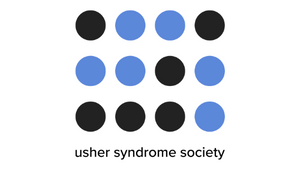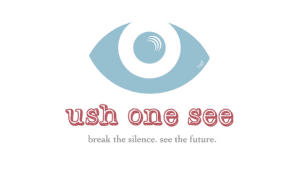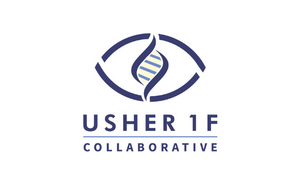[For an overview of the science behind Usher syndrome type 2, review this article from the National Institutes of Health (NIH) National Center for Biotechnology Information (NCBI), last revised October 8, 2020.]
Individuals with Usher type 2 are born hard of hearing and gradually lose their vision due to retinitis pigmentosa (also known as RP). Hearing tests show a sloping hearing loss that is mild to moderate in the low frequencies and severe to profound in the high frequencies. Vestibular problems are usually not present in individuals with type 2. RP generally manifests in the teen years and progresses throughout life.
Today, a genetic diagnosis of Usher syndrome type 2 can be made in utero if the parents suspect that the child may have Usher syndrome. Genetic testing after birth can also confirm a diagnosis, Before genetic testing became widely available, the diagnosis typically wasn’t made until later in life when the RP became so severe that it impacted one's daily life.
Carriers of Usher Type 2
When an individual has one Usher 2 gene (carrier), half the normal amount of the protein usherin is produced. Scientists believe that this is sufficient for normal vision and hearing, therefore no observable symptoms result. There are theoretical reasons to think that there may be very mild hearing and vision problems in older adults who are carriers, but this has never been studied. It may be that these genes are partly responsible for some of the hearing and vision losses that all of us have as we grow older.
Hearing in Type 2
People with Usher type 2 are born with a moderate to severe hearing loss. The hearing loss is milder in the low frequencies and more severe in the higher one. Since most speech involves the lower frequencies, this means that adults and children with Usher type 2 will usually have good oral communication skills.
Vision in Type 2
A person with Usher 2 may become legally blind as a young adult primarily because of severe tunnel vision. While most adults retain good central vision for most of their lives, some with Usher 2 will lose their functional vision as they age.
Balance in Type 2
Individuals with Usher type 2 rarely experience balance issues.
Genes involved in Type 2
There are three subtypes of type 2 which have known gene locations: USH2A, 2C (GPR98) (VLGR1), and 2D (DFNB31) (WHRN).
USH2A accounts for approximately 80%, GPR98 (VLGR1) accounts for approximately 15%, and DFNB31 accounts for approximately 5% of type 2 cases. DFNB31 mutations have also been reported in several families with recessive nonsyndromic hearing loss. Identified disease-causing mutations in all of these genes include missense, nonsense, frameshift, splice-site as well as deletions distributed across nearly all exons.
Some mutations in USH2A can cause retinitis pigmentosa without hearing loss. This is referred to as nonsyndromic Usher syndrome or atypical Usher syndrome.
Usher Type 2 subtypes
Subtype 2c is the least common of the 3 subtypes. Because the genes for 2b and 2d have not been identified, we don’t have any idea about their frequencies, but we believe them to be uncommon. There is evidence that there are more Usher 2 subtypes that have not been recognized.







